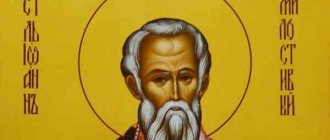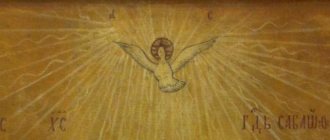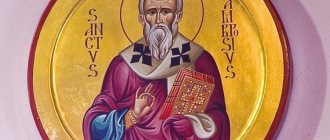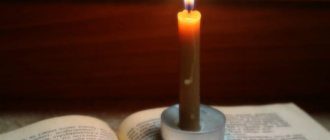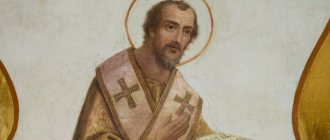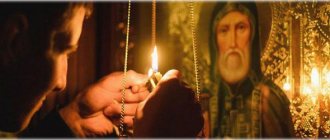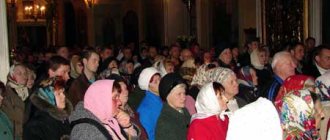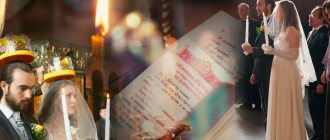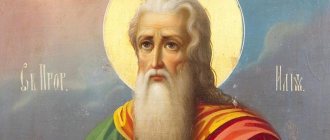Francis of Assisi
(Latin Franciscus Assisiensis, Italian Francesco d'Assisi) (c. 1182 - 1226), Roman Catholic saint, founder of the Franciscan Order.
Born in Assisi (Umbria), into a wealthy family of a textile merchant. In 1206, having renounced his wealth and quarreled with his father, he left home and devoted himself to preaching “holy poverty” as the perfect form of love for God. Poverty, elevated to the life ideal of following the “poor Christ,” allowed, according to Francis of Assisi, to free oneself from many of the hardships of worldly life and placed a person in conditions of complete humility, eliminating the alienation of the individual from the world around him.
Having become a wandering preacher living off alms, Francis of Assisi in 1207-1209. together with several followers, he founded the brotherhood of minorites (“lesser brothers” or “brothers”) and compiled its “Most Ancient Charter,” which provided for vows of poverty, chastity and obedience.
After the approval of the charter by Pope Innocent III, the brotherhood was transformed into the Franciscan Order, which soon numbered thousands of adherents.
The enormous moral authority of Francis of Assisi, who was called the “mirror of Christ,” attracted many believers to him. As a traveling preacher, he visited Spain, Southern France, and participated in the 1219 crusade to Egypt, where he tried to convert the Sultan to Christianity. Returning to Italy in 1220, he resigned from the leadership of the order, which was turning from a brotherhood of unmercenaries into an ordinary monastic order. The difficulty for the brotherhood to follow the ideal of poverty and non-covetousness, and the attempts of some monks (with the support of the Curia) to soften the harsh rules of the order caused tension in the relations of Francis of Assisi with Rome.
He spent the last years of his life in solitary prayers on Mount Alverio (Apennines). Here, according to Catholic tradition, an angel appeared to him, after which stigmata appeared on the feet and palms of Francis of Assisi.
Died in 1226 in Assisi.
In 1228 he was canonized by the Roman Catholic Church, one of the most revered saints by Catholics. Since 1939 he has been considered the patron saint of Italy. Stories and legends about him are collected in the anonymous collection “Flowers of St. Francis of Assisi.”
Who was Saint Francis of Assisi?
Born in Italy around 1181, St. Francis of Assisi was famous in his youth for drinking and partying. After fighting in the Battle of Assisi and Perugia, Francis was captured and imprisoned for ransom. He spent almost a year in prison awaiting payment from his father and, according to legend, began receiving visions from God. After being released from prison, Francis heard the voice of Christ, who told him to repair the Christian church and live in poverty. Consequently, he abandoned his luxurious life and became a devotee of the faith, his reputation spreading throughout Christendom.
Later in life, Francis received a vision that left him with the stigmata of Christ marks, reminiscent of the wounds that Jesus Christ received when he was crucified, making Francis the first person to receive such holy wounds. He was canonized as a saint on July 16, 1228. During his life, he also developed a deep love for nature and animals and is known as a patron of the environment and animals; his life and words have had a lasting resonance with millions of followers around the world. Every October, many animals around the world receive blessings on its day.
Saint Francis of Assisi
Other prayers usually recited along with the Peace Prayer
Along with the prayer “ Lord, make my hands a continuation of Your Peace ,” excerpts from his other Christian hymns and chants are usually included among the most important prayers of the saint. This:
The saint’s first prayer appeal to his order (“allow us, the unfortunate, to act according to Your will, to do what You want, and to always want what You want”). The so-called “Prayer before the Crucifixion” - “illuminate the darkness of my heart and give me true faith, clear hope and perfect love, understanding and knowledge...”
Early life of luxury
Born around 1181 in Assisi, Duchy of Spoleto, Italy, Saint Francis of Assisi, although revered today, began his life as a committed sinner. His father was a wealthy textile merchant who owned farmland around Assisi, and his mother was a beautiful Frenchwoman. Francis was not destitute in his youth; he was spoiled, treating himself to fine food, wine and wild celebrations. By age 14, he had dropped out of school and became known as a rebellious teenager who frequently drank, partied, and broke the city's curfew. He was also known for his charm and vanity.
In this privileged environment, Francis of Assisi learned the skills of archery, wrestling and horsemanship. He was expected to follow his father into the family textile business, but he grew tired of the prospect of a life in the textile trade. Instead of planning for a future as a merchant, he began to dream of a future as a knight; knights were medieval action heroes, and if Francis had any ambitions, he should have become a war hero like that. It won't be long before it becomes possible to wage war.
In 1202, war broke out between Assisi and Perugia, and Francis eagerly took his place in the cavalry. Little did he know at the time, his experience of the war would change him forever.
Architecture
The building of the Church of San Francesco looks like a classic single-nave basilica, endowed with a “T”-shaped silhouette.
At the same time, the lowest floor is the tomb containing the remains of Francis of Assisi, the Lower Church serves as the second underground floor, and the luxurious Upper Church crowns the building. The entrances to the above-ground and underground tier are adjacent to the platforms.
The rows of arches decorating the church from the north give the snow-white building a special lightness. Numerous details of the external facade of the temple, pointed portals, and elongated elements indicate a Gothic architectural style, in which the influence of Italian traditions is also felt. In other words, visitors are presented with a Gothic style, devoid of a gloomy background.
Crypt
The entrance to the tomb of St. Francis is in the nave of the Lower Church. The stone tomb is hidden under the central altar. There are 4 niches carved into the walls of the crypt in which the ashes of the saint’s disciples are kept: Angelo Tancredi, Masseo, Rufino, Lione. There is an underground tunnel leading to the crypt. Throughout the history of the church, this entrance was banned for a long time, and then began to function again.
The crypt itself has minimal decoration, which it received in 1932. Before this, there were attempts to give the tomb a more solemn appearance, which, however, contradicted the concept of renunciation of luxury by Francis and his order.
Lower Church
The premises of the Lower Church took on a well-kept appearance in the 70s of the 13th century. The structure of the underground tier is as follows: a central nave surrounded by chapels. The nave was painted by an artist now known as the Master of St. Francis. The master painted 10 paintings, 5 of them illustrate the torment of Christ, the other 5 frescoes are dedicated to the life of St. Francis. The vaulted ceiling of the nave looks truly mesmerizing - it is covered with blue paint, on which the stars twinkle in gold.
St. Martin's Chapel
The chapel, dedicated to the early Christian saint Martin of Tours (lat. Martinus), who lived in the 4th century AD, was entrusted to the care of the artist Simone Martini. Over the course of 2 years, from 1317 to 1319, the master painted frescoes in the chapel dedicated to the miracles of St. Martin. There were also 4 paintings depicting royalty surrounded by saints.
Chapel of Mary Magdalene
The inspiration for the creation of the chapel dedicated to Mary Magdalene is considered to be Bishop of Assisi Teobaldo Pontano. The chapel was built at the beginning of the 14th century, and its main value is the frescoes by Giotto. Six panels depict the saint during the coming of the resurrected Jesus, the resurrection of Lazarus, in conversation with the Bishop of Pontano.
The most dramatic painting is considered to be “Noli me tangere!” ("Dont touch me"). The revived son of God forbids people to touch him, despair and torment are visible throughout Magdalene’s appearance, she does not believe her eyes.
Transept
The crossbar of the “T”-shaped structure of the Lower Church was designed in several stages. An unknown artist, the so-called master of St. Nicholas, Giotto and his students, as well as Cimabue, worked on the transept throughout the 13th and 14th centuries . The frescoes depict the birth and childhood of Jesus, the escape into Egypt, and the Crucifixion. The painting “Madonna with Saint Francis” by Cimabue is especially highly valued; it is considered to be the best example of the master’s work.
Another master who contributed his hands to the design of the underground tier of the temple is Pietro Lorezetti. His work can be seen in the south wing of the transept. The frescoes, dated 1320, are called the “Passion Cycle”. They, in Lorenzetti’s characteristic expressive manner, depict the torment and execution of Christ. The crucifixion scene is filled with special depth, thanks to the deep play of colors and elaboration of faces.
Chapel of John the Baptist
The small chapel adjacent to the transept is famous for the amazing fresco by Lorenzetti, Madonna dei Tramonti . The face of the Mother of God and Child is painted on the wall opposite the window. At sunset, the sun covers the fresco with golden light, which received the second name “Madonna of Sunset”.
Apse
The apse of the Lower Church is decorated with a main altar made of a single piece of marble. The papal altar is surrounded by numerous arches executed in the Gothic style. The wooden choir was installed in the 15th century; the frescoes decorating the apse vaults were significantly damaged in the 17th century.
Nevertheless, the paintings of the four sails of the vault, united by the common name “Paradise Vault,” have survived to this day. The ceiling wedges are decorated with allegorical images of Chastity, Obedience, Poverty. Three virtues were cornerstone for Saint Francis, depicted on the 4th sail. The authorship of the paintings was attributed to Giotto di Bondone, as well as to his student, who received the nickname “Master of Sails”.
Upper Church
The premises of the Upper Church harmoniously combine Gothic architecture and numerous frescoes that decorate the vaults and walls of the basilica.
Rows of stained glass windows allow sunlight to enter the temple, bringing life to the biblical paintings.
Franciscan cycle. Frescoes by Giotto di Bondone
The most ambitious work on decorating the Church of St. Francis is considered to be a cycle of 25 frescoes performed by Giotto and his students.
Pictures of the New Testament did not appear on the ceilings and walls of the temple overnight. In 1282, Giotto first began work, at that time still as a student of Cimabue. The brush of a 25-year-old master inspired the wall panels in the longitudinal nave of the Upper Church.
Not only the Bible was used as supporting material for the frescoes, but also the biography of Francis of Assisi - the book “Legenda Maior”. Scientists, as well as ordinary people, note the unprecedented beauty and depth of drawing of Giotto’s frescoes.
The young master really made a revolution in his business: he developed a new composition of paints and painted pictures on wet plaster. The artist did not limit himself to two-dimensional perception, rejecting the standard framework of fresco art.
The cycle of Giotto's frescoes is distinguished by its colorful and simple subjects, which invariably endear visitors to the temple. Historians note that the paintings depict real corners of medieval Assisi, as well as real people, with a high degree of accuracy.
In the 90s of the 13th century, Giotto and his masters painted most of the frescoes on Franciscan themes. Di Bondone himself limited himself to drawing the key figures, and also took up the design of the wall and vault above the entrance to the Upper Church (The Ascension of Christ and the Descent of the Holy Spirit).
Code of Fathers
Close to 1300, Giotto began painting the vault of the temple; images of the four Church Fathers were painted on it: Gregory, Jerome, Augustine, Ambrosius. The holy fathers are depicted surrounded by their assistants, busy with the affairs of the church. The master’s love for small details and realistic drawing of surrounding objects are striking.
Transept
Much of the western transept is decorated with frescoes by Cimabue, painted throughout the 1380s. The master completed 4 large paintings using lead-rich paints. Over time, the colors darkened and the frescoes lost their integrity.
Nave
The upper church previously had a nave, which stole a cycle of 32 frescoes illustrating the New and Old Testaments. Large-scale paintings were painted by masters of church painting: Jacopo Toritti and Pietro Cavallini. A powerful earthquake in 1997 damaged the building of the Temple of San Francesco in Assisi, and the work of medieval artists was lost.
Bell tower
On the south side of the basilica there is a bell tower about 60 meters high, built in 1239.
The snow-white pillar is crowned by an open belfry, decorated with arches. It houses 7 bells, the largest weighs 51 tons and is named after Francis.
All bells are electrically driven, since the smallest of them weighs 4 tons. The Temple of San Francesco in Assisi, with the ringing of its mighty bells, summons the flock from the most remote corners of the city.
After the war
After a year of negotiations, Francis & apos; the ransom was accepted and he was released from prison in 1203. When he returned to Assisi, Francis was a completely different man. On his return he was dangerously ill in both soul and body, a battle-weary victim of war.
One day, as the legend goes, while riding a horse in the local countryside, Francis met a leper. Before the war, Francis had fled from a leper, but in this case his behavior was completely different. Considering the leper as a symbol of moral conscience or like Jesus incognito, according to some religious scholars he hugged and kissed him, later describing the experience as a feeling of sweetness in the mouth. After this incident, Francis felt an indescribable freedom. His old way of life had lost all its appeal.
Subsequently, Francis, now in his early 20s, began to pay attention to God. Instead of working, he spent increasing amounts of time in the remote mountain refuge and in the old, quiet churches around Assisi, praying, searching for answers, and helping to feed the lepers. During this time, while praying before an old Byzantine crucifix in the Church of San Damiano, Francis reportedly heard the voice of Christ, who told him to rebuild the Christian church and live in extreme poverty. Francis obeyed and dedicated himself to Christianity. He began preaching around Assisi and was soon joined by 12 devoted followers.
Some thought Francis was crazy or a fool, but others saw him as one of the greatest examples of how to live the Christian ideal since Jesus Christ Himself. Whether he was truly touched by God, or simply a man misinterpreting hallucinations caused by mental illness and/or poor health, Francis of Assisi quickly became famous throughout Christendom.
Diet
Francis de Paula, Bormes-les-Mimosas, France.
Francis adhered to a diet not only free of animal meat, but also free of all animal products, such as eggs and dairy products.[7] One of the vows of the order he founded was abstinence from meat, fish, eggs, butter, cheese and milk.[8][9] Francis has been described as a vegan.[10][11]
The two main movements in this order were humility and non-violence. The word "Minimum" refers to life as the least or least, or to humility, simplicity and simplicity. The call for non-violence and non-cruelty was to not harm any creature.[12]
Devotion to Christianity
Following his epiphany at the Church of San Damiano, Francis experienced another defining moment in his life. To raise money to rebuild the Christian church, he sold a bolt of cloth from his father's store along with his horse. His father was furious upon learning of his son's actions and subsequently dragged Francis to the local bishop. The bishop told Francis to return his father's money, to which his reaction was extraordinary: he took off his clothes and returned the money to his father with them, declaring that God was now the only father he knew. This event is celebrated as Francis & apos; final conversion, and there is no sign that Francis and his father ever spoke again after this.
The bishop gave Francis a rough tunic, and dressed in this new modest garment, Francis left Assisi. Unfortunately for him, the first people he met on the road were a group of dangerous thieves who beat him badly. Despite his wounds, Francis was delighted. From now on he will live according to the Gospel.
Francis & apos; At that time, the radical idea of Christ-like poverty. The Christian Church was extremely wealthy, as were the men who led it, as was the case with Francis and many others who felt that long-held apostolic ideals had been destroyed. Francis set out on a mission to restore the original values of Jesus Christ to the now decadent church. He attracted thousands of followers with his incredible charisma. They listened to Francis & apos; preaching and joined his way of life; his followers became known as Franciscan friars.
Continuously trying to achieve spiritual perfection, Francis was soon preaching in five villages a day, teaching a new type of emotional and personal Christian religion that ordinary people could understand. He even went so far as to preach to animals, which drew criticism from some and earned him the nickname "God's fool." But Francis's message was spread far and wide, and thousands of people were captivated by what they heard.
In 1224, Francis reportedly received a vision that left him with the mark of Christ, marks reminiscent of the wounds Jesus Christ received when he was crucified, through his hands and a piercing wound on his side. This made Francis the first person to receive the sacred wounds of the stigmata. They will remain visible for the rest of his life. Because of his early work treating lepers, some believe that the wounds were actually symptoms of leprosy.
Recommendations
- ^ a b c
"THE CATHOLIC ENCYCLOPEDIA: St. Francis of Pauline."
www.newadvent.org
. Retrieved 2020-09-05. - ^ a b c d
Foley O.F.M., Leonard, "Saint Francis of Paola",
Saint of the Day: Lives, Lessons and Feasts
(rev. Pat McCloskey O.F.M.), Franciscan Media ISBN 978-0- 86716-887-7 - ^ a b c d
"Saint Francis of Paola".
Catholic News Agency
. Retrieved 2020-09-05. - ^ a b
Farmer, David Hough (1997).
Oxford Dictionary of Saints
(4th ed.). Oxford [ua]: Oxford Univ. Click. p. 194. ISBN 0-19-280058-2. - ^ a b c
Butler, Rev. Alban, "St. Francis Paola, Confessor, Founder of the Order of Minims",
Lives or Fathers, Martyrs and Other Principal Saints
, Vol. IV, D. & J. Sadlier, & Company, 1864 - Royal and Republican Sovereignty in Early Modern Europe
(Ragnhild Marie Hutton et al., eds.) Cambridge University Press, 1997, pp. 317 ISBN 9780521419109 - Dr. Holly Roberts, Vegetarian Christian Saints
, Angeli Press, 2004, p. 146. - F. L. Cross (ed.), Oxford Dictionary of the Christian Church
, Oxford University Press, third edition, 1997, p. 1090. - Cohn-Sherbok, Lavinia. (1998). Who's Who in Christianity
. Rutledge. paragraph 95. ISBN 0-415-26034-5 - Today in History: A Daily Review of World Events
. Tabi Books, 2003. - Rubin, Edward L. (2015). Soul, Self and Society: The New Morality and the Modern State
. Oxford University Press. p. 291. ISBN 978-0-19-934865-7 - "Our Founders", Hermits of St. Francis Archived 2013-12-09 at the Wayback Machine
- “Saint Francis of Paoli prophesying the birth of a son to Louise of Savoy”, Louvre
- "The Vision of St. Francis Paola", J. Paul Getty Museum Archived 2013-06-02 at the Wayback Machine
- Burns and Oates, The Church and Kindness to Animals
, 1906, pp. 123-127. - "404". amicspaola.com
. Retrieved 2020-09-05. - Simi & Segreti, St. Francis of Paola, Rockford, IL: Tan Books, 1977, p. 26.
- "Page not found". Loyola Press
. Retrieved 2020-09-05. Cite uses a generic header (help) - "Saint Francis of Paola: turn to the Lord with a pure heart." www.vatican.va
. Retrieved 2020-09-05. - uCatholic (02 April 2022). "Saint Francis Paola". uCatholic
. Retrieved 2020-09-05. - Chapman, Sophie. "Black Jack" (in Russian). Retrieved 2020-09-05.
This article incorporates text from a publication now in the public domain: Father Cuthbert (1913). "Saint Francis of Paola." In Herbermann, Charles (ed.). Catholic Encyclopedia
.
6
. New York: Robert Appleton Company.
Death and legacy
As Francis approached his death, many predicted that he was a saint in the making. As his health began to deteriorate faster, Francis went home. Knights were sent from Assisi to guard it and ensure that no one from the neighboring cities dragged it away (at that time the saint's body was considered an extremely valuable relic that would bring, among other things, glory to the city where he rested).
Francis of Assisi died on October 3, 1226 at the age of 44 in Assisi, Italy. Today Francis has a lasting resonance with millions of followers around the world. He was canonized as a saint two years after his death, on July 16, 1228, by his former patron, Pope Gregory IX. Today, Saint Francis of Assisi is a patron of ecology title in honor of his boundless love for animals and nature. In 2013, Cardinal Jorge Mario Bergogli decided to honor Saint Francis by taking his name and becoming Pope Francis.
Gift of Prophecy
Francis was believed to have the gift of prophecy.[4] He apparently predicted to several people in 1447, 1448 and 1449 the capture of Constantinople by the Turks, which occurred on 29 May 1453 under the command of Mahomet II, when Constantine Palaiologos, the last Christian emperor, died in battle.[5] He also predicted the capture of Otranto by the Ottoman Turks in 1480 and its subsequent restoration by the King of Naples.
Theodore van Thulden painted a mystical episode that is said to have taken place over a century ago. It depicts Francis Paola, who was revered in France because he visited the country in 1482, at the bedside of Louise of Savoy to announce that she would give birth to the next king of France, the future Francis I. In 1515, King Louis XII died without an heir male, and the throne passed to Francis I of the Valois-Angoulême branch of the royal family. Louise of Savoy and her husband, the Count of Angoulême, almost certainly the figure depicted to the left of the bed, decided to name the child Francis in honor of the saint.[13]
